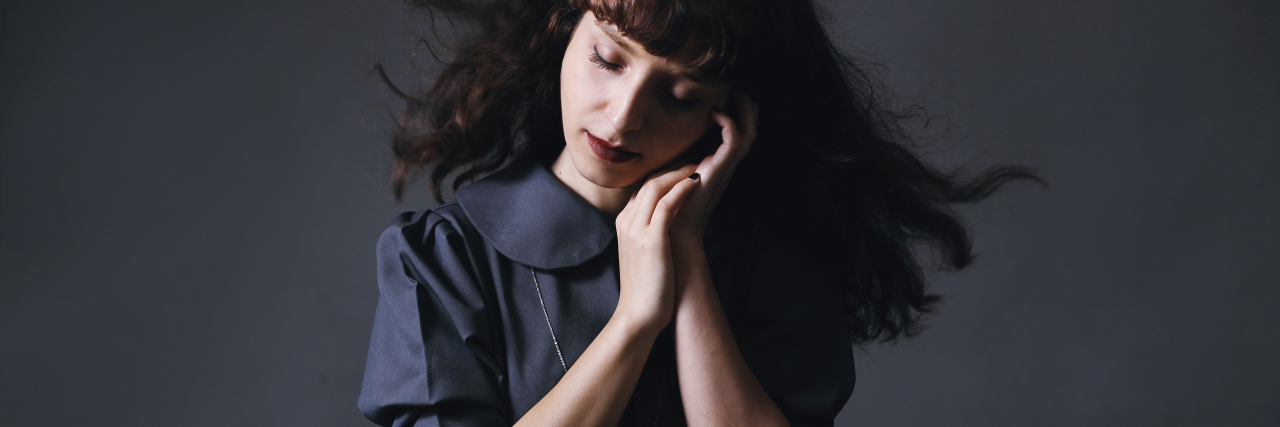Hope. I am so full of hope right now. The word “hope” doesn’t usually go with depression but after I read an article about a new kind of treatment for depression, one that could possibly change lives, save lives. and give people back their lives, I felt hope.
I’ve had depression for as long as I can remember, although when I was younger, I didn’t know “it” was called depression. I just knew there were times when I was extra sensitive, sad, teary, and when I took everything personal and only wanted to stay in my bedroom listening to music or reading. I didn’t even want to go outside with my friends, or see anyone. I wished I had never been born. Sometimes “it” would last months. Now I know it was depression and now I know how unpredictable, debilitating, exhausting, and hopeless depression can make you feel. Depression is the leading cause of disability worldwide with more than 280 million adults having experienced at least one major depressive episode within a year. These episodes can lead to suicide, which takes over 700,000 people worldwide every year, as well as being the fourth leading cause of death in 15-29 year olds. While there are several effective treatments for mild, moderate, and severe depression, these methods can take time, with some medications taking four to six weeks to show any change, and can have uncomfortable side effects. SAINT, a new form of iTBS treatments, just may be the “game-changer” we’ve been waiting for.
Intermittent theta-burst stimulation (iTBS) is an FDA-approved, non-invasive form of transcranial magnetic stimulation (TMS) treatment for patients who are not responding to psychotherapy, medication, or are severely depressed. With iTBS, a device with a magnetic coil is attached to the head, creating a magnetic field where electric pulses pass through the coil at varying speeds to the part of the brain that deals with functions such as mood regulation, problem-solving, and other distinct regions of the brain associated with a specific mental health disorder. Current treatments of iTBS are 600 pulses per session done in three-minute sessions given daily for six weeks.
Stanford Accelerated Intelligent Neuromodulation Therapy, also known as SAINT, is the result of a double-blind experimental study done at the Stanford University School of Medicine. The study, published by a group of Stanford researchers on October 29, 2021 in the American Journal of Psychiatry, included 29 participants, aged 22 to 80, all with treatment-resistant depression or conditions that had not responded to medication or talk therapy. SAINT is built upon a current FDA-approved iTBS treatment which has been approved for the treatment of depression. SAINT has recently been given breakthrough status by the FDA, bringing the treatment closer to being available.
SAINT projects to lessen the length and time of treatments and response times of current iTBS treatments while producing higher success rates that are individualized by using an MRI to target a specific section of the brain to treat; current iTBS treatments target general areas of the brain rather than a specific site.
Of the 29 participants in the study, 14 were given the SAINT treatment and 15 were given a placebo. SAINT treatments are 1,800 pulses per session in 10-minute increments with 50-minute breaks between each session, given 10 times daily over a five-day period. Patients began to feel better anywhere from the first day of treatment to five days, with remission happening in almost 80% of participants within days of treatment. The results of a SAINT treatment can last months with only temporary side effects of headaches and fatigue.
With the results of this study, the Stanford researchers hope to have SAINT readily available in hospitals and other facilities where mental health crisis patients are under observation, or are seeking help. The highest risk of suicide comes after a hospital visit and whereas medication can take a month to relieve symptoms of depression, SAINT is showing promise in alleviating symptoms of depression in a one-week treatment, as well as significantly reducing symptoms and feelings of suicide. The researchers of SAINT also hope to study the effectiveness on other conditions such as addiction, obsessive compulsive disorder (OCD), autism spectrum disorder, and other disorders.
Among the participants of the study is 60-year-old Deirdre Lehman, who has struggled with bipolar depression for most of her life. After undergoing the SAINT treatment, Deirdre’s depression began to significantly lessen; she even went back to school to get her bachelor’s degree, something she was not able to do when she was younger because her bipolar disorder distracted her, not allowing her to focus on school. When asked where she sees the treatment in five to 10 years, Lehman responded, “It will change the world. Oh, it’s a game-changer.”
If you’re interested in participating in a study, or maybe have some general questions about whether it’s the right trial for you, sainttmsstudy@stanford.edu is the email address I used to ask my own questions about qualifications, and what steps need to be taken to possibly become a part of a study. I’m really looking forward to hopefully hearing back from someone in the department.
While two of the SAINT trials for treatment-resistant depression have already been completed, Clinicaltrials.gov shows two upcoming studies involving the treatment of SAINT on major depressive disorder (MDD) and suicidal cognition by evaluating “the effects of SAINT, on the neural networks underlying explicit and implicit suicidal cognition in inpatients with major depressive disorder” and one study titled, “Treatment of Preoperative Depression to Reduce Opioid Use Following Arthroplasty.” Information on these SAINT trials, as well as many other trials that may be of interest to you, can be found on Clinicaltrials.gov.
Photo by Zohre Nemati on Unsplash

